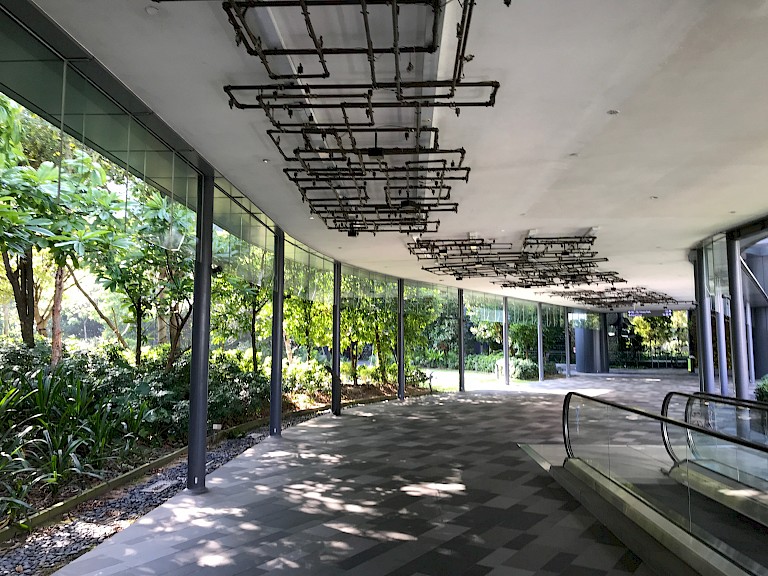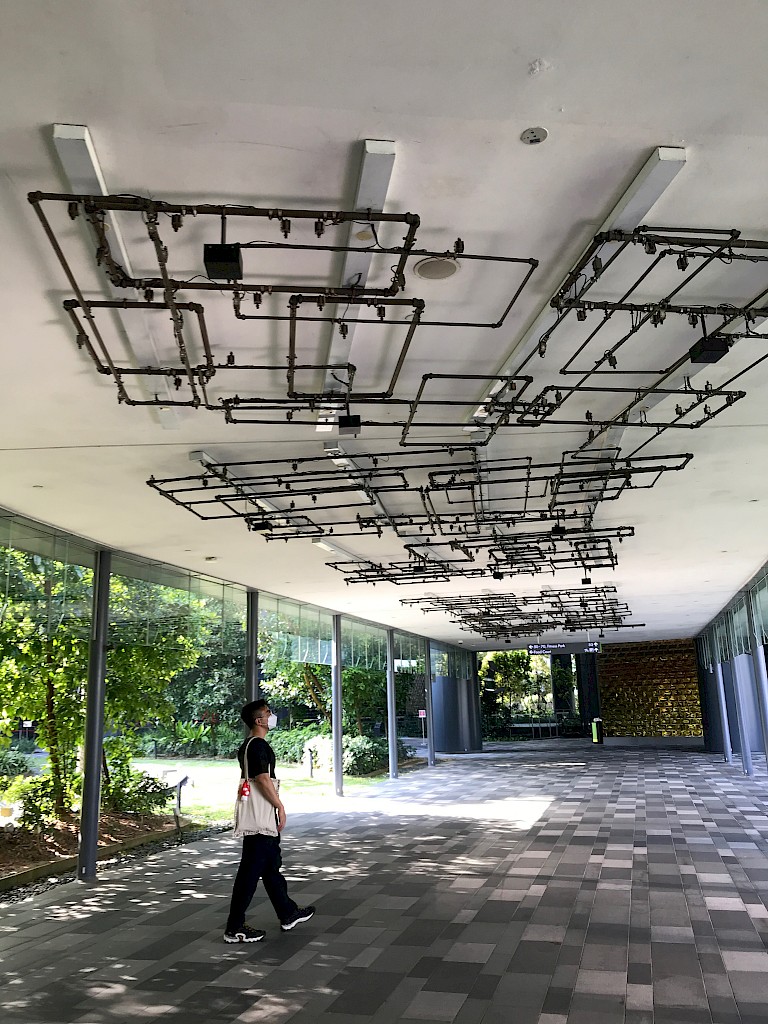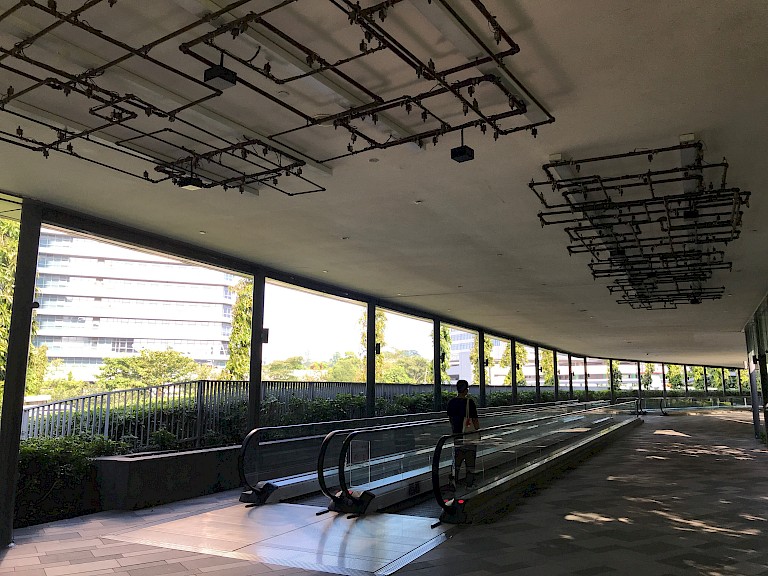



Zul Mahmod is a sound-media artist. Formerly trained in sculpture, Zul has expanded his practice to include sculpted sound installations and live sound performances to activate a sensory experience beyond the visual. Everyday objects are often utilised and reconfigured in his works to investigate the audible attributes of physical space in relation to the emotional responses of its inhabitants. Zul is regarded as one of Singapore’s leading sound artists and has been at the forefront of a generation of sound-media artists through his interdisciplinary and experimental approaches.
Zul was one of the participating artists at the Singapore Pavilion, 52nd Venice Biennale (2007). His works have been presented at exhibitions such as SUNSHOWER: Contemporary Art from Southeast Asia 1980s to Now, Mori Art Museum, Tokyo, Japan (2017);An Atlas of Mirror, Singapore Biennale 2016 and Esplanade – Theatres on the Bay, Singapore (2016). He represented Singapore with a Sound Art Performance at the Ogaki Biennale in 2006. He also frequently collaborates with artists and practitioners from a variety of disciplines in the performing arts.
In 2017, Zul received the inaugural Soichiro Fukutake Prize from Singapore Art Museum and Benesse Holdings, Inc. for his Singapore Biennale 2016 commissioned artwork.
Zul Mahmod’s Sonic Pathway is one of four commissioned public artworks as part of Culture City. Culture Scape. A collaboration between the corporation Mapletree Investments Pte Ltd (Mapletree) and NTU Centre for Contemporary Art Singapore (NTU CCA Singapore)—a research centre of Nanyang technological University,Culture City. Culture Scapeis unique in its partnership between the private and public sector.
In the selection methodology of the artworks for Culture City. Culture Space., artists and their proposed projects were first recommended by NTU CCA Singapore’s curators and later assessed by the commissioner, Mapletree. The evaluation criteria included intent and concept of the artwork, aesthetics and feasibility. As highlighted by Mapletree CEO Edmund Cheng, artworks were “chosen based on the desired aesthetic for the asset. They also complement the architecture and environment as well as the experience Mapletree aims to deliver to its tenants and visitors.” In the commissioning process of Sonic Pathway NTU CCA Singapore’s curators and Mapletree were closely involved in bringing Zul’s proposal to realisation.
In conceptualisingCulture City. Culture Scape.,all the artworks take into account their unique set of surroundings and create new environments to be experienced and interacted with. Integrated into a commercial and office development project, at the heart of Culture City. Culture Scape. enriching the urban imaginary and creating a space where “work and play” coexist. WhileSonic Pathwayis located in a pathway where people do not gather or have concentrated moments of activity, its interactivity offers a space and moment of introspection for active listening.
Inspired by the idea of expanded sculptural environments, the four permanent artworks explored the interplay between landscape, architecture, and broader social, environmental, historical and economic conditions that have shaped our current realities. For example, MBC is within stone's throw from the Port of Singapore. Extending upon its rich maritime connections, flows of goods and capital continue to be integral tenets of the country's economic success, which has undoubtedly resulted in the continuously changing landscape of the city-state. As Sonic Pathway purports the constant state of flux and ever-expanding urban spaces has changed our sonic landscapes and also affected nature and other creatures that we share spaces and intertwined interconnections with.
Alongside the permanent artworks, an integral component of City Culture. City Scape. is a Public Art Education Programme. Aimed to engage with various audiences and communities, programmes and organised events include guided tours, artist talks, workshops, seminars and conferences.
While sound as a material and dynamic branch of contemporary art practices is gaining prominence, with rapid developments and strategies of presentation, the realisation of interactive sound art in the public sphere is not as commonplace. Unlike being displayed in the relatively controlled atmosphere of a gallery or museum, sound art in the public space demands an acute environmental awareness. The artwork embedded in its sonic context should not overwhelm the existing
soundscape. In the instance ofSonic Pathway, the artwork received a controversial response after the launch of Culture City. Culture Scape. Tenants with offices close to Sonic Pathway complained that the sounds emitted were distracting and even disturbing. While Sonic Pathway was originally activated for a longer duration throughout the day, it has since been reduced to accommodate the needs and demands of its community, constituents and users. And as the artist surmises in an interview with NTU CCA curator Khim Ong, “I think it is good that some people do not like it. We can please everyone. At least we understand where they are coming from. It can be a learning curve. It is about listening to what they have to say. I can use their feedback, maybe for future works.”
In her essay “An elucidation of public sound art through non-sonorous tradition,” Maria Andueza Olmedo references philosopher and sociologist Henri Lefebvre’s Theory of Moments (1947) and distinguishes between the public artwork as “monument” and “moment”. While the former encompasses a state that is static, immobile and isolated, the latter refers to an experience that is always in movement, always changing, always in context. Sonic Pathway is exemplary of a work of the second category, continually in flux; responding to movements and bodies traversing the space, and perceived differently based on the current environmental sonorous conditions. In Singapore, where the majority of public artworks are sculptural and falling within the public’s conception of what artworks in the public sphere should be, Sonic Pathway can be viewed as an ambitious, unconventional and experimental artwork. By privileging the sound instead of visual, the artwork provides a multisensory experience for passers-by.
Sonic Pathway and the three other artworks as part of Culture City. Culture Scape. is also reflective of public art as a tool for placemaking. The commissioned artworks are reflective of Singapore's multicultural identity and rich history while looking at its present and future. Melding space, artworks and people together, Culture City. Culture Scape. imbues the built environments at MBC II with its own unique identity and enlivens the spaces where we work and inhabit. Programming has also been an integral part ofCulture City. Culture Scape. Programmes include guided tours, education resource guides for teachers and student, a discursive picnic as part of Archifest 2017: Building Agency, a launch event with an after-work live performance by Zul Malmod, workshops for teachers and educations as well as the public art education summit Art, Urban Change, and the Public Sphere.
All copyright belongs to Shanghai Academy of Fine Arts, Shanghai University.


